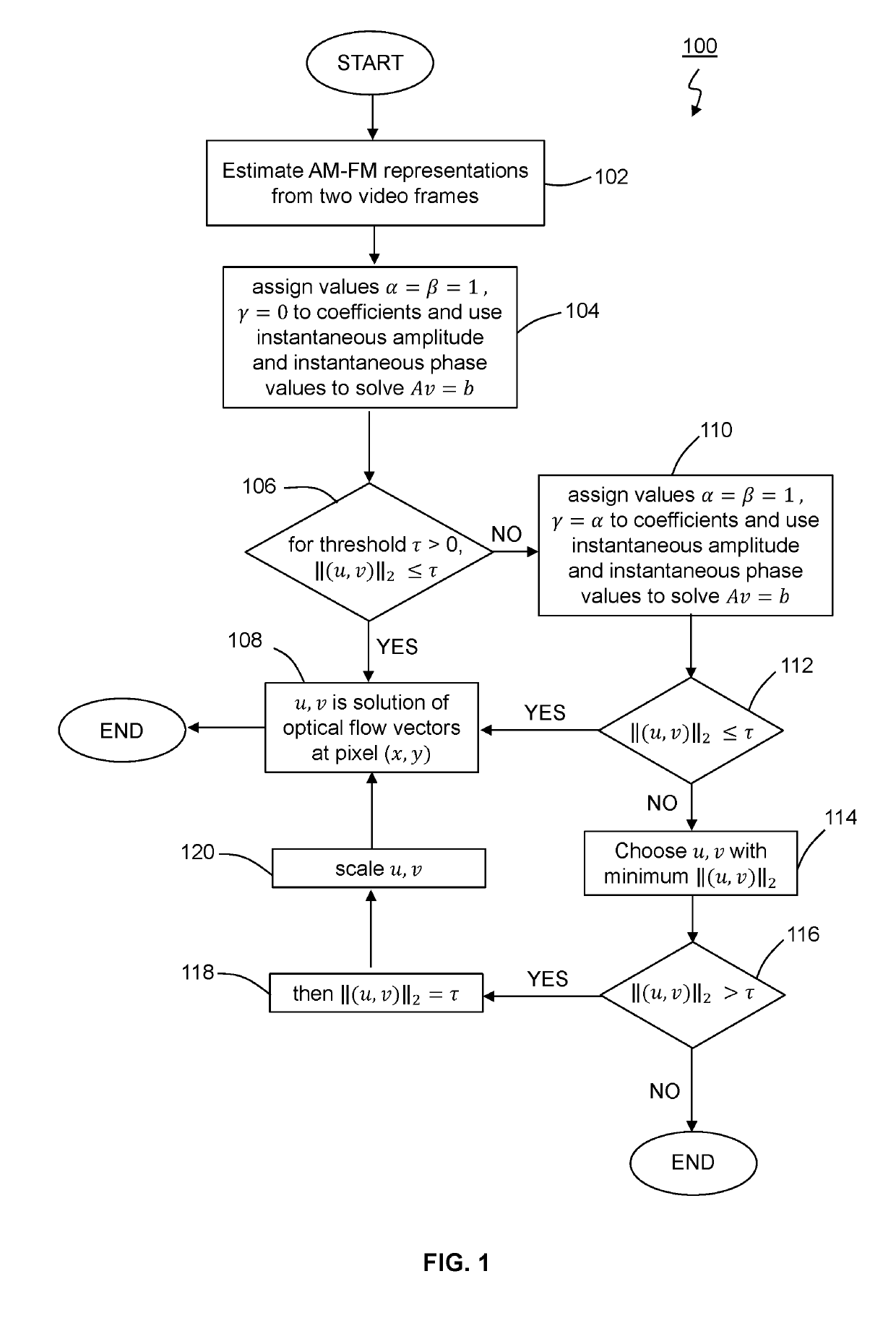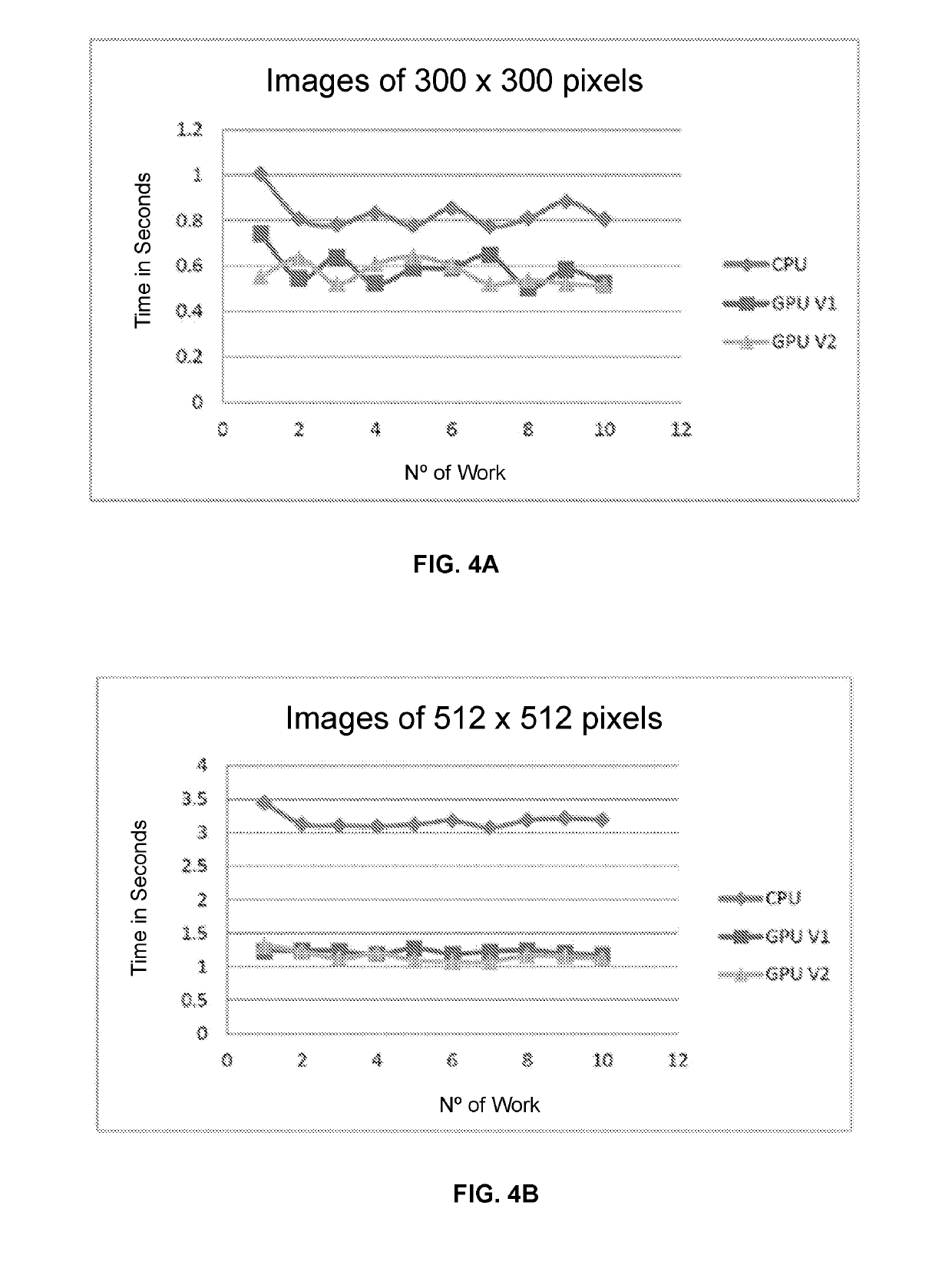System and methods for parallel processing motion estimation of digital videos
a technology of motion estimation and video, applied in the field of motion estimation from digital video, can solve the problems of current available technology, 1) the accuracy of estimation and 2) the processing time, and achieve the effects of accurate and rapid methods, accurate and fast results, and more accurate motion estimation
- Summary
- Abstract
- Description
- Claims
- Application Information
AI Technical Summary
Benefits of technology
Problems solved by technology
Method used
Image
Examples
Embodiment Construction
[0022]The optical flow represents the apparent rate of motion of objects using brightness patterns of consecutive images. This optical flow is found by analyzing the pattern of brightness of objects of consecutive images assuming that lighting is uniform on the surfaces of objects. However, the lighting is not constant in real cases.
[0023]Although there are several methods to estimate the optical flow of an object, for exemplary purposes the invention is discussed with respect to the Horn-Schunck, Lucas-Kanade and AM-FM methods.
[0024]The Horn-Schunck (HS) method takes two constraints for the components of the motion. The first is that the brightness of objects in the video, denoted by E(x,y,t), is constant. The other assumption is that image intensity varies slowly. Based on these assumptions:
Exu+Eyv+Et=0,(1)▽2u=(∂u∂x)2+(∂u∂y)2and▽2v=(∂v∂x)2+(∂v∂y)2,(2)
[0025]where Ex, Ey, and Et are the partial derivatives with respect to (x,y) and time. The velocity components in the x,y coordinate...
PUM
 Login to View More
Login to View More Abstract
Description
Claims
Application Information
 Login to View More
Login to View More - R&D
- Intellectual Property
- Life Sciences
- Materials
- Tech Scout
- Unparalleled Data Quality
- Higher Quality Content
- 60% Fewer Hallucinations
Browse by: Latest US Patents, China's latest patents, Technical Efficacy Thesaurus, Application Domain, Technology Topic, Popular Technical Reports.
© 2025 PatSnap. All rights reserved.Legal|Privacy policy|Modern Slavery Act Transparency Statement|Sitemap|About US| Contact US: help@patsnap.com



